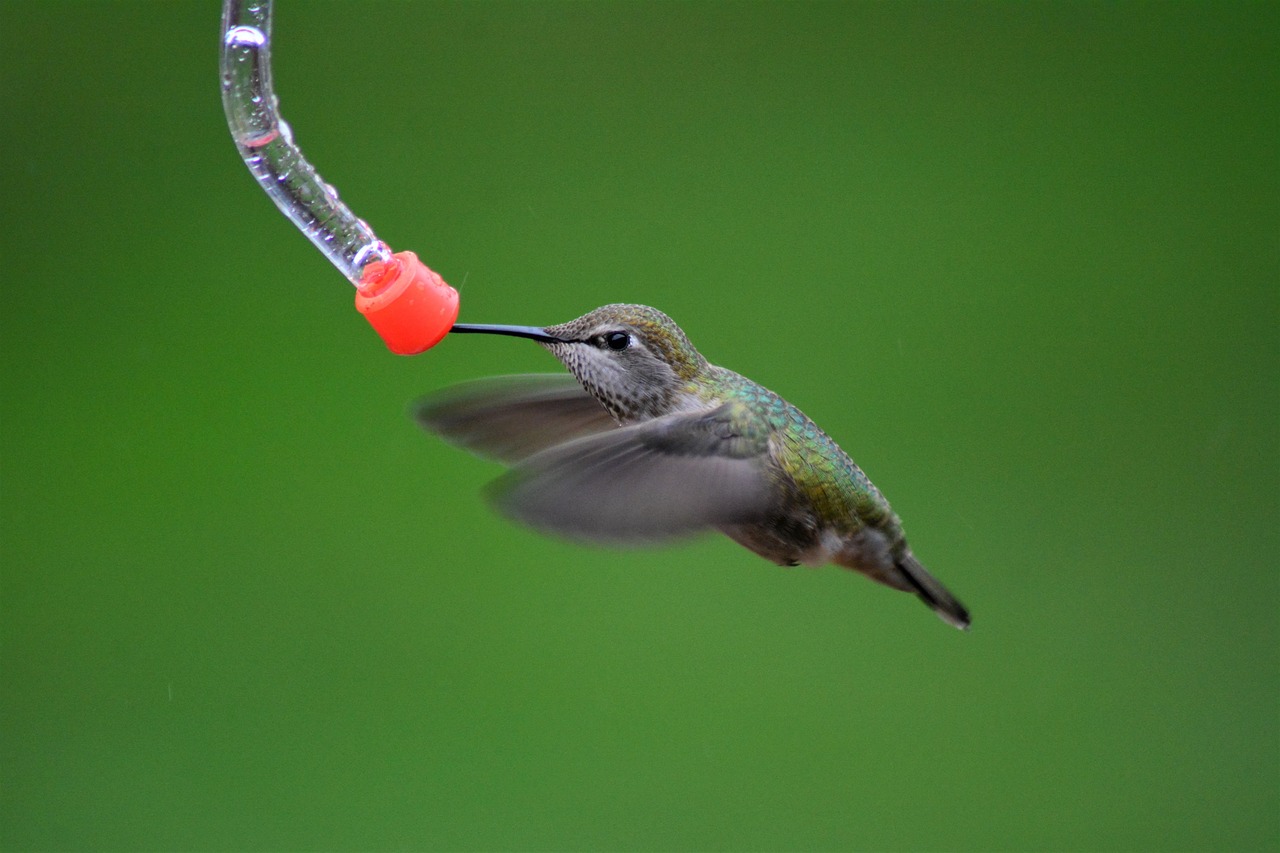Indtrocution
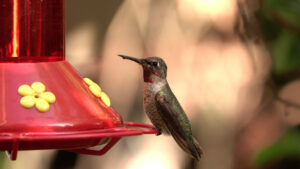
There’s something genuinely magical about welcoming hummingbirds into your backyard. Their shimmering feathers catch the sun, and their wings buzz with energy as they dip into your hummingbird feeder. If you’re like me, every glimpse feels like a reward—a flitting spark of wonder in your garden. But before you buy the best hummingbird feeder or scoop up deals on glass hummingbird feeders, let’s talk about something even more important: where to put your feeder for the happiest birds and the best daily sightings.
This guide will help you master the art of hummingbird feeder placement, offering real-life tips and Pinterest-worthy wisdom so you can transform your space into a hummingbird haven that brings nature right to your window.
Hummingbird Feeder Placement: The Secret to a Bird-Lover’s Paradise
Creating a “hummingbird highway” in your backyard isn’t just about finding the cutest* hummingbird bird feeder* (though you’ll find some fabulous options for that below). Instead, it’s about thinking like a hummingbird—lively, curious, and always on the hunt for the perfect perch. By tuning in to what these vibrant little birds love, you’ll discover there’s an art—and a science—to feeder placement.
Imagine sitting with your morning coffee and seeing a ruby-throated hummingbird hover right outside your window. Or watching, from a shaded deck, as these tiny marvels flit between blooms and feeders, filling your outdoor space with life and color. That magic moment starts with strategic placement.
All you need is a nudge in the right direction, a few practical steps, and you’ll attract a loyal crowd of feathered guests all season.
Importance of Feeder Placement
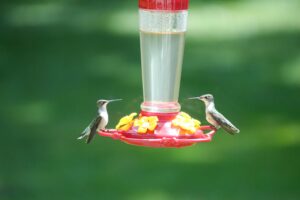
Why Placement Matters
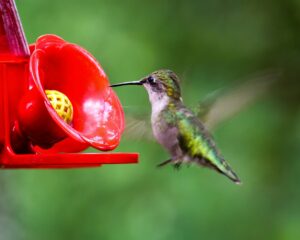
Where you position your hummingbird feeders can make or break your backyard birdwatching experience. Hummingbirds are creatures of habit and instinct. If your feeder is tucked far from sightlines or out in the open, exposed to harsh elements, it could go untouched for weeks.
Ideal placement encourages frequent, safe visits. You want to offer easy access, visibility, and safety from predators. Think about how hummingbirds move—they dart from one trusted food source to the next, seeking a spot that’s both nourishing and secure.
In my own backyard, I’ve experimented with different spots, from shady nooks to sun-drenched railings. Without fail, carefully chosen locations bring in the most birds, year after year. Plus, it’s a simple way to get the most out of your investment, especially with quality hummingbird feeders or if you’re hunting hummingbird feeder deals.
Effects of Sunlight and Shade
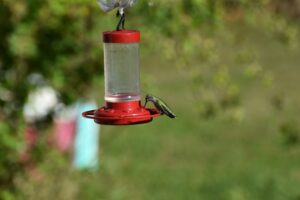
Light plays a vital role in feeder placement. Full, direct sun can heat up nectar quickly, causing spoilage and making it less appealing to your visitors. No one wants their homemade sugar water to ferment before lunchtime!
Conversely, a fully shaded feeder might not catch the attention of curious hummingbirds or allow you to witness their colorful glow.
Aim for a balance: dappled sunlight that keeps nectar fresh while letting both you and the birds enjoy your feeder throughout the day. If you have a tree with broad leaves or a porch that gets morning sun and afternoon shade, those are perfect spots for your best hummingbird feeders.
Ideal Locations for Hummingbird Feeders
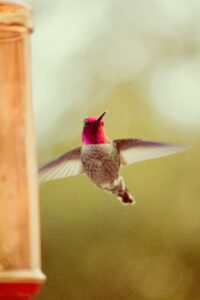
Near Flowers
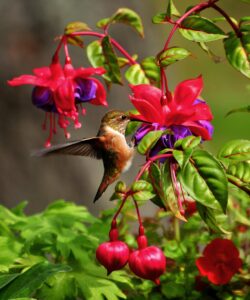
Hummingbirds are naturally drawn to vibrant, nectar-rich flowers. So, placing glass hummingbird feeders near flowering beds, hanging baskets, or even along a blooming fence is an open invitation they can’t resist.
In my own garden, the feeders nestled amidst salvia, fuchsia, and trumpet vines are always the busiest. If you’re blessed with a flower-filled yard, try tucking your feeder within a few feet of your blooms. Not only does it boost your chances for frequent visits, but it also gives the birds a natural place to perch and rest between sips.
Away from Predators
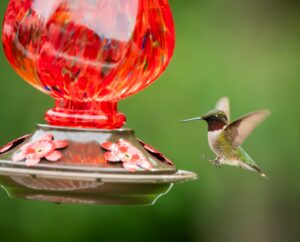
Safety matters—these tiny birds are constantly on the lookout for danger. Keep feeders high enough off the ground to avoid prowling cats or curious raccoons. A location at least five feet up works best.
And if you can, avoid thick hedges or dense brush where predators might lurk. Open spacing gives hummingbirds a clear view, enough to scope things out and zip away if danger appears. When shopping for the best bird feeders for hummingbirds, consider sturdy options you can easily hang from a shepherd’s hook or tree branch.
Viewing Angles
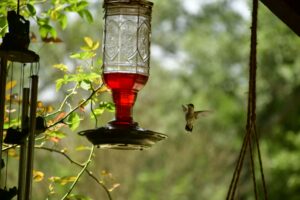
Let’s be honest—half the fun is watching all the activity! Position your hummingbird feeder where you’ll get the best views: a kitchen window, a patio seat, or a cozy breakfast nook.
If you set up multiple hummingbird feeders, try different angles and heights for varied viewing experiences. Some of my best memories are the quiet moments spent sipping tea, feeder just a few feet away, as curious hummingbirds hover and dart in plain sight.
Types of Hummingbird Feeders
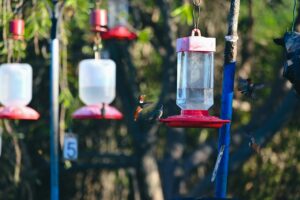
Glass Hummingbird Feeders
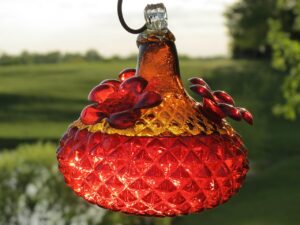
There’s a reason glass hummingbird feeders are favorites for many bird lovers. Not only are they beautiful, catching and reflecting sunlight like gems, but they’re also easy to clean and refill.
Glass won’t absorb odors or flavors, so your nectar stays fresh, and you can often see the fill level at a glance. Plus, they stand up to repeated use and changes in weather. If you’re in the market for durability and elegance, explore hummingbird feeders deals on high-quality glass models—they often become the centerpiece of a backyard garden.
Hanging Hummingbird Feeders
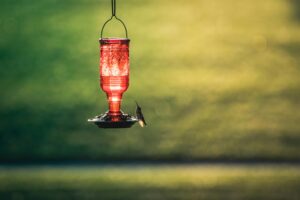
These are the classics: hanging hummingbird feeders that sway gently in the breeze and can be suspended from any sturdy branch, hook, or bracket. Their portability lets you experiment—move them to different spots to determine where your avian visitors feel most comfortable.
The best hummingbird feeders in this category come with bee guards or ant moats to keep unwelcome insects away, making every sip safe and sweet for your feathered friends.
Covered Hummingbird Feeders
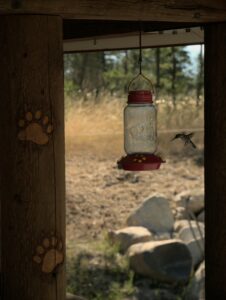
If your climate brings intense rain or relentless sun, a covered hummingbird feeder can make all the difference. A small roof or weather guard keeps rain from diluting nectar and shields it from the heat, prolonging freshness and making it more appealing.
Covered feeders are especially handy during the hottest midsummer weeks. Browse the options—covered feeders often come with innovative features and are a great investment when checking out hummingbird feeders deals for the season.
Attracting More Hummingbirds
Using Multiple Hummingbird Feeders
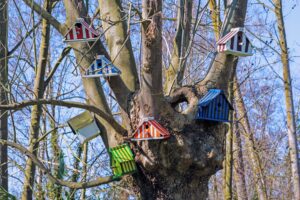
Want to see hummingbirds all day long? The trick is simple—put out more than one feeder! Hummingbirds are territorial, and a single feeder can quickly turn into a battleground for the boldest birds.
By spacing several feeders throughout your yard (ten to fifteen feet apart is perfect), you create an oasis for more birds, reduce squabbles, and keep the nectar flowing. Include a mix of hanging, glass, and covered hummingbird feeders for variety.
During my trial-and-error phase, adding just two more feeders tripled the action within a week. Plus, it’s an economical way to maximize your investment if you’re snagging hummingbird feeder deals or coupons online.
Unique Hummingbird Feeders to Consider

Today’s hummingbird bird feeders come in delightful shapes and colors—think hand-blown glass, artistic metalwork, and flower-inspired designs that double as garden décor.
Look for feeders with built-in perches, bee guards, or integrated ant moats. Some of the best bird feeders for hummingbirds include innovative touches like wide-mouth openings for easy filling or extra-bright red accents to lure even shy birds. Unique feeders not only draw more visitors but also become conversation pieces when guests visit your backyard.
Best Bird Feeders for Hummingbirds
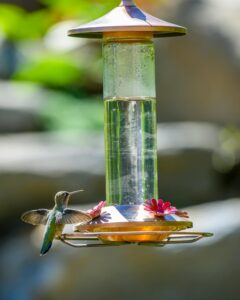
Time for a little shopping! Whether you prefer classic elegance or bold, whimsical designs, there’s a feeder for every taste and budget. The best hummingbird feeder is one that fits your climate and complements your outdoor style while being easy to maintain.
Glass hummingbird feeders remain a top choice for their beauty and longevity. Hanging varieties work great for flexibility. Look for reputable brands and check reviews to find hummingbird feeders that offer durability, easy cleaning, and clever features—these often yield the highest satisfaction and best hummingbird feeder deals over time.
Maintenance and Care
Cleaning Strategies
Cleanliness is non-negotiable if you want happy, healthy hummingbirds. Sugar water spoils fast, especially in warm temps, so wash feeders with hot, soapy water every two to three days during peak season (and at least weekly in cooler months).
Use a bottle brush to scrub every nook leftover residue can harbor mold or bacteria. Rinse thoroughly, avoiding harsh detergents or bleach. If your glass hummingbird feeders start to look cloudy, a little vinegar and water does wonders. Your diligent care is the secret sauce behind the busiest, healthiest backyard feeders.
Seasonal Considerations
Hummingbird traffic ebbs and flows with the seasons. In the South, you may see visitors nearly year-round; in northern regions, the return of hummingbirds signals spring’s true arrival.
Place feeders out in early spring, at the first sign of migratory activity. Keep them filled and clean through the fall, as late travelers rely on your food for fuel. During chilly nights, bring feeders indoors to prevent freezing.
As the season winds down, gradually reduce the number of feeders so birds can migrate naturally. Store glass hummingbird feeders in a cool, dry spot to keep them looking new for years.
Inviting hummingbirds into your daily life isn’t just a hobby—it’s a sensory experience that fills your backyard with color, energy, and pure delight. Whether you’re drawn to the elegance of glass hummingbird feeders or scouring for the best hummingbird feeder deals, success starts with thoughtful placement and a little ongoing care.
Nothing compares to the sight of a hummingbird, wings a blur, sipping from a feeder that’s perfectly placed just for them.
If you enjoyed this article, don’t forget to save it on Pinterest or share it with a friend! Your garden and the hummingbirds will thank you.

